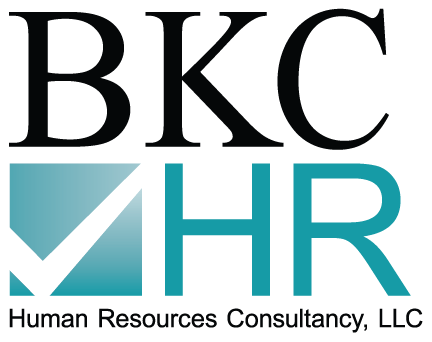Under new Tax Law Article 24-A, an optional pass-through entity tax (PTET) that partnerships or New York S Corporations may annually elect to pay on certain income for tax years beginning on or after January 1, 2021. Individual pass-through entity owners electing to pay PTET who are subject to personal income tax may be eligible for a PTET credit on their New York State income tax returns. The new election is in line with IRS Notice 2020-75 which permits such elective PTE mechanisms to help individual taxpayers avoid the $10,000 SALT cap on itemized deductions.
Eligible partnerships are any partnerships that are required to file in New York under Tax Law § 658(c)(1). A partnership is eligible to make the election even if it has partners that are not eligible for a PTET credit including, but not limited to, corporate partners.
Eligible S Corporations are any New York S corporation that are subject to the fixed dollar minimum tax under Tax Law § 209.
Eligible entities may make an annual election to pay PTET beginning on or after January 1, 2021. The election must be made online on an annual basis and is irrevocable. Currently, authorized individuals can opt in to PTET on behalf of an eligible entity through the entity’s Business Online Services account, now through October 15, 2021. Note that the election can only be made online through an entity’s Business Online Services account. If there is none set up, an authorized person would need to create one.
After January 1, 2022, the annual election will need to be made online no later than March 15.
PTET is imposed on the PTE taxable income of an electing entity. Generally, PTE taxable income includes all income, gain, loss, or deduction of an electing entity that flows through to a direct partner, member, or shareholder for New York personal income tax purposes.
An electing New York S corporation calculates its PTE taxable income by aggregating amounts of income, gain, loss or deduction that flow through for New York income tax purposes to direct members or shareholders who are taxable under Article 22. Aggregated income and gain is reduced by any losses or deductions without regard to any limitations that would be imposed on the member’s or shareholder’s federal and New York State personal income tax returns. The electing S corporation must then apportion this net amount of taxable income to New York based on the apportionment rules of Article 9-A included in Tax Law § 210-A.
Before computing its PTE taxable income, an electing partnership is required to classify all direct members or partners that are taxable under Article 22 as a resident or nonresident of New York. Members or partners may not be classified as part-year residents for PTET purposes. A member or partner should be treated as a resident if they are a resident of New York for New York personal income tax purposes for at least half of the year. All other members or partners should be treated as nonresidents. If a member or partner is a trust, the electing partnership must classify the trust as a resident or nonresident of New York State based on the residency status of the trust and not of the beneficiaries.
An electing partnership’s calculation of its PTE taxable income must include all items of income, gain, loss or deduction, to the extent they would flow through and be included in the taxable income of direct members or partners that are taxable under Article 22, including guaranteed payments. A partnership must not include in its PTE taxable income any amounts of income, gain, loss, or deduction that flow through to a direct partner that is a partnership or an entity not subject to tax under Article 22, even if the income is ultimately taxable to a partner under Article 22 through tiered partnerships.
To compute its PTE taxable income, an electing partnership must compute both a resident PTE taxable income pool and a nonresident PTE taxable income pool and add these amounts together. This PTE taxable income calculation applies to partners or members who do not have a special allocation of profits that differs from their allocation of losses. If a special allocation is present, an electing partnership must take these allocations into account when computing each pool.
To compute its resident PTE taxable income pool, an electing partnership must aggregate any amounts of income and gain that flow through to resident individual members or partners and offset that amount by any losses or deductions that flow through to resident individual members or partners, without regard for any limitations that would be imposed on the member’s or partner’s federal and New York State personal income tax returns.
To compute its nonresident PTE taxable income pool, an electing partnership must aggregate any amounts of income and gain derived from or connected with New York sources5 that flow through to nonresident individual members or partners and reduce that amount by any losses or deductions derived from or connected with New York sources that flow through to nonresident individual members or partners, without regard for any limitations that would be imposed on the member’s or partner’s federal and New York State personal income tax returns.
The applicable tax rates for the PTE tax are graduated based on the PTE’s taxable income. The rates are as follows:
| Not over $2 million | 6.85% |
| $2 million but not over $5 million | $137,000 plus 9.65% (over $2 million) |
| $5 million but not over $25 million | $426,500 plus 10.30% (over $5 million) |
| Over $25 million | $2,486,500 plus 10.90% (over $25 million) |
After January 1, 2022, an electing entity will be required to pay estimated tax on the amount of PTET calculated for the current taxable year. Estimates will need to be paid online through the entities business account.
In addition to New York’s PTE tax, the following states have also enacted a PTE tax available to pass-through entities doing business in that state: AL, AR, CO, CT (mandatory), GA, ID, LA, MD, NJ, OK, RI, SC, and WI.
The experts here at BKC, CPAs, PC are prepared to answer your questions. Please contact us.
Learn more about our Tax Planning & Compliance Services.
Read more helpful articles here.




